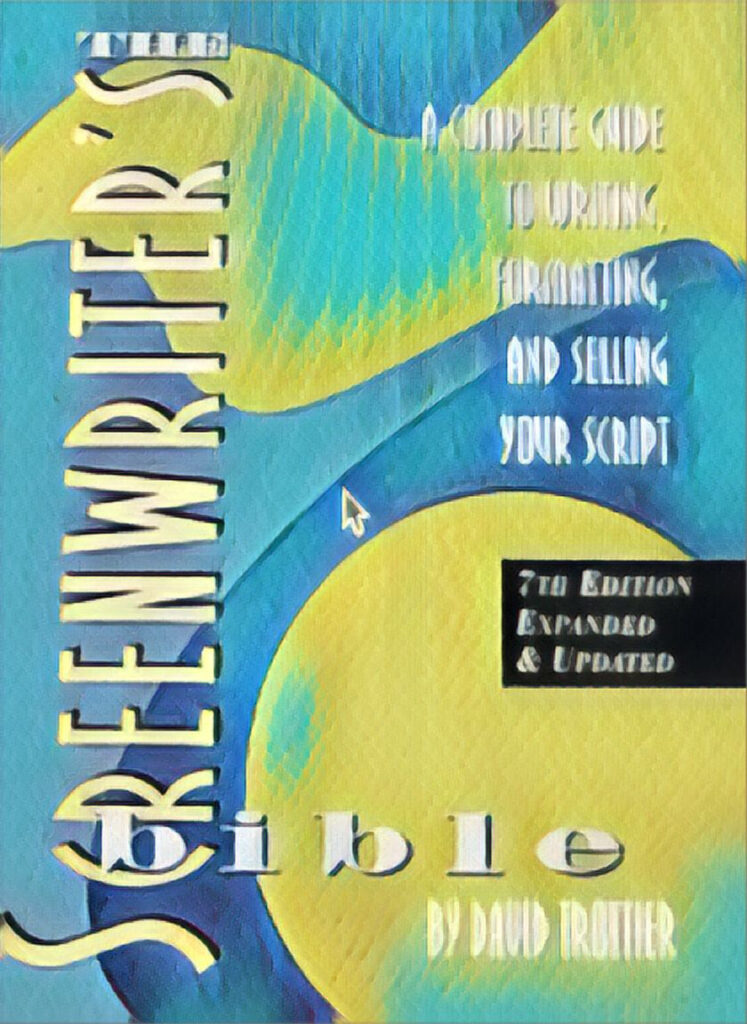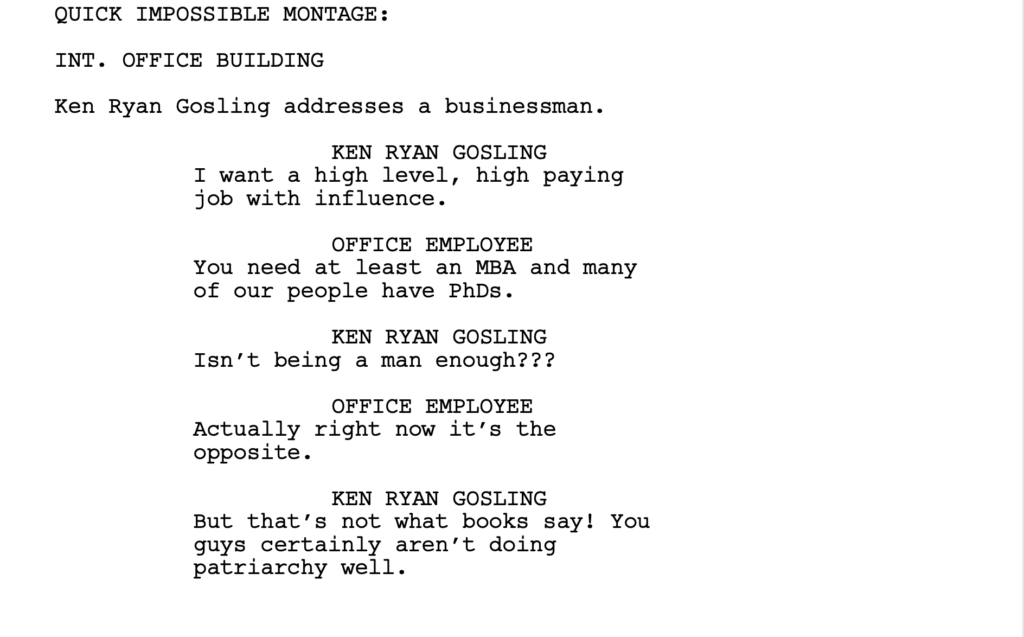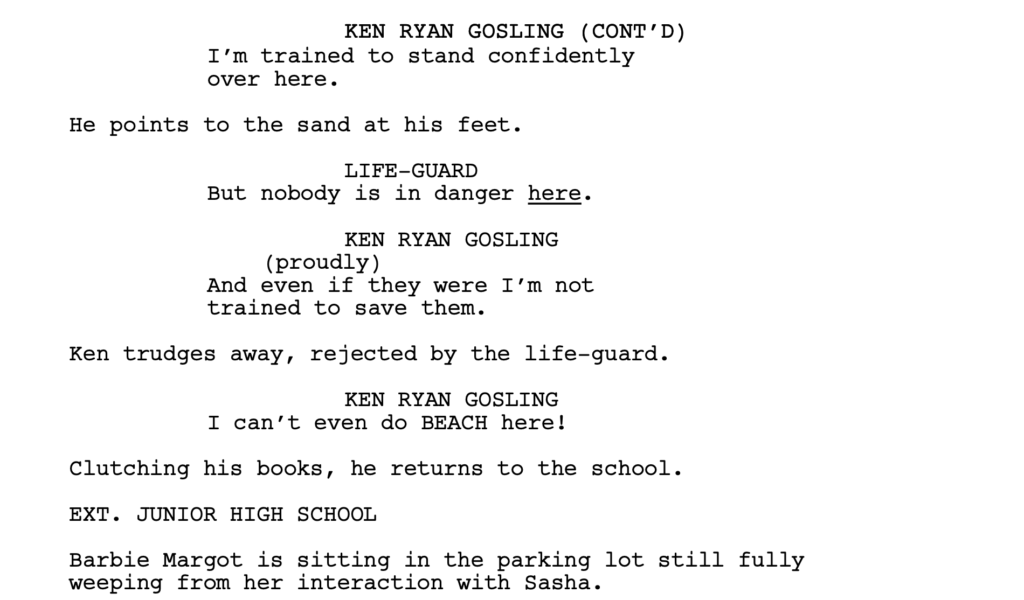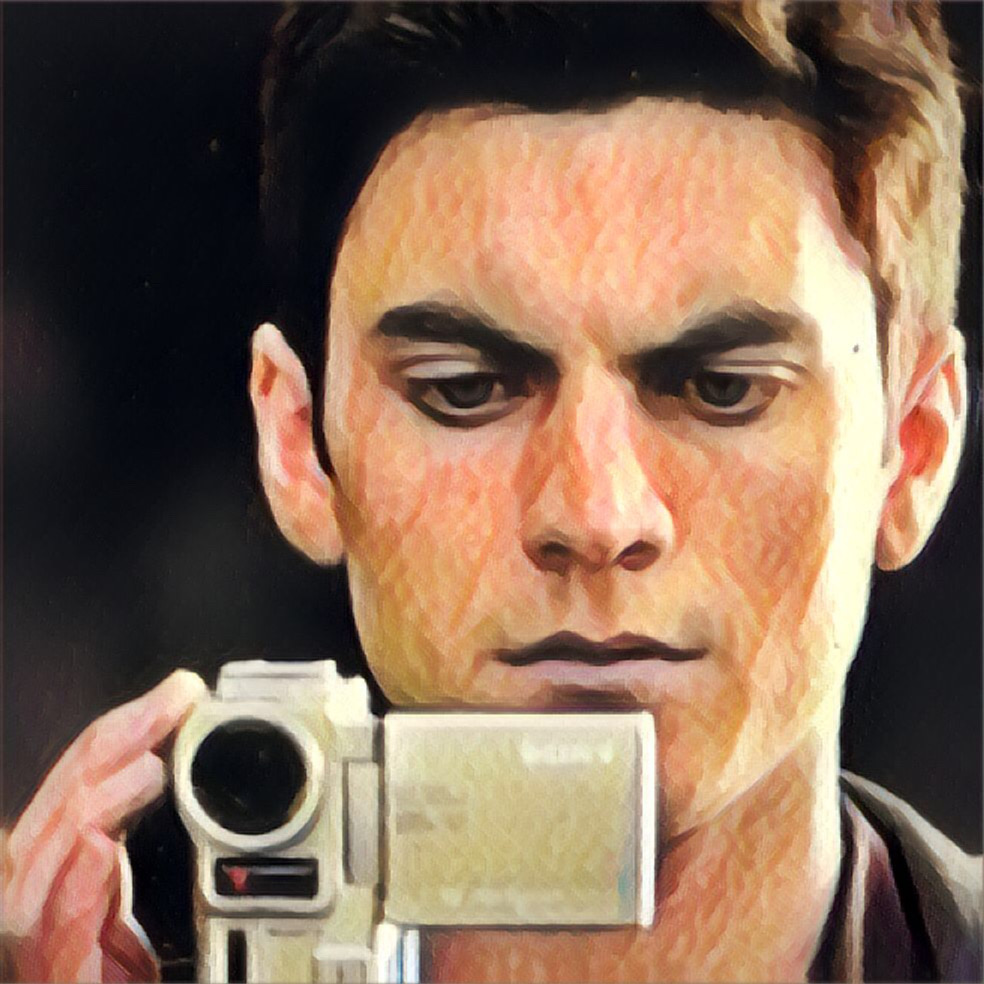This week, we’re covering montages.
But before we do, let’s first indulge ourselves with a little South Park, shall we? (After all, if you gotta get good at something fast, there’s only one way to do it…; ))
So, yeah, the purpose of a montage is to condense a lot of action into a series a shots in order to save time, space, and/or give a broader context of what’s going on.
According to Dave Trottier’s indispensable The Screenwriter’s Bible (pages 267-268), there are at least four ways of doing this.
I’m going to show all four versions given in the book, and then we’ll look at some samples from some recent classics. (Please note that his text is italicized, but I have added “Method 1, 2, 3, etc…” just to break it up.)

Method 1
Montage examples
Here’s a common format for the MONTAGE. The concept or main idea is “having fun.”

If the MONTAGE takes place within a scene, then return BACK TO SCENE. (In the sample script “The Perspicacious Professor,” we return BACK TO THE CLASSROOM.) Otherwise, double-space and type the next master scene heading. It’s okay to type END MONTAGE before the next scene heading if desired. For example:

Or

If you wish, include dialogue in a MONTAGE sequence, but generally the focus should be on beats of action or visuals.
Method 2
If you wish to specifically identify the locations within MONTAGE, use one of the following methods:

Method 3
The above locations could be placed in CAPS, as follows.

Method 4
Similar to the MONTAGE is the SERIES OF SHOTS, consisting of a chronology of quick shots that tell a story. They lead to some dramatic resolution or dramatic action, whereas a MONTAGE usually focuses on a single concept. Usually, the main idea of the SERIES OF SHOTS is included in the heading, but not always. Here’s an example of a SERIES OF SHOTS.

Those letters numbering the shots could be replaced with dashes, as with the MONTAGE, or omitted altogether.
Montage vis-a-vis Series of shots
Generally, the MONTAGE is used more than the SERIES OF SHOTS. Even when the sequence is a SERIES OF SHOTS, the MONTAGE format is often used. The terms are sometimes used interchangeably.
Generally, a MONTAGE in the script is scored to music in the movie. For example, the above MONTAGE of Suzy and Bill could be lengthened to be accompanied by a love song. Thus, the word MONTAGE often means Put the song here. But don’t you indicate the musical selection you prefer.
Again, the above is from Dave Trottier’s The Screenwriter’s Bible, which is an amazing resource. (And, if you’re wondering why you shouldn’t select music in the script, I go into a little bit of it here.)

Let’s Look at Barbie
Here’s where it gets interesting. Let’s take a look at Barbie, covered here, which uses ample montages to expedite action.

The montage continues as Ken Ryan Gosling goes to a doctor’s office, Venice Beach, etc.
“Quick Impossible Montage” works because it fits with the fun, whimsy, and general anarchic nature of Barbie. But guess what? There isn’t an “END MONTAGE” at the end. (Gasp!) Check it out.

We don’t necessarily need an “End Montage” here because the montage only involves Ken. So, changing the focus to Barbie Margot signifies the montage’s end.

Let’s Look at an Example from American Beauty
At the end of American Beauty (discussed here) teens Ricky and Jane have found Lester’s body after he has been shot. A beyond-the-grave voiceover narrates what he sees as the audience sees where the other characters were in a montage.


Note how “Montage” isn’t indicated anywhere. Lester’s voiceover gracefully connects the worlds of the characters as he passes out of this life and into the next; the montage is self-evident.
All of the above choices demonstrate that there are several different ways you can write out a montage.
While there aren’t any overarching rules, it’s helpful to just be clear, concise, and consistent.
